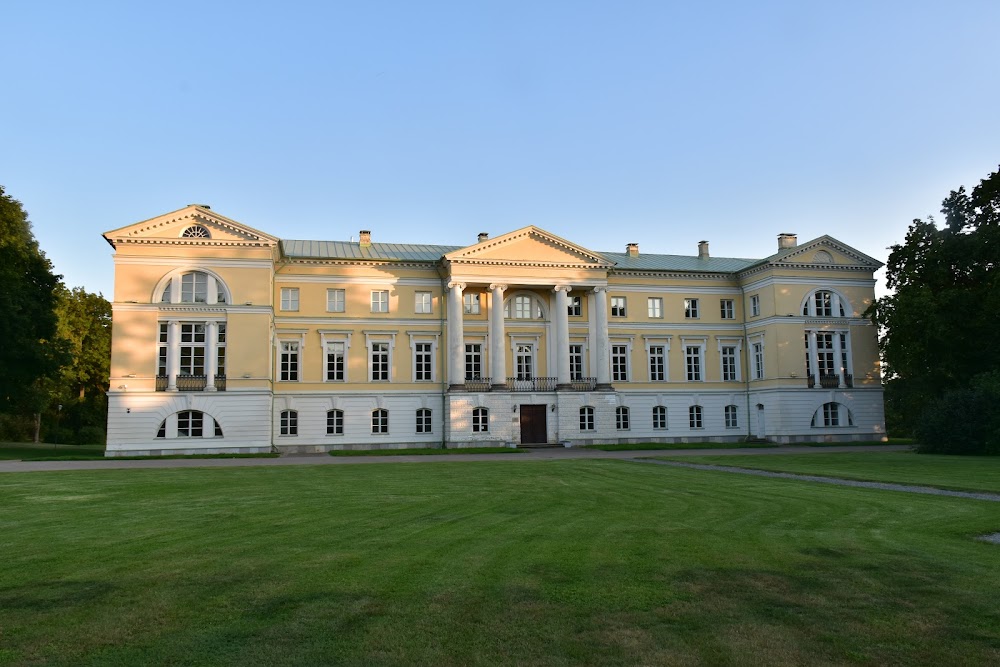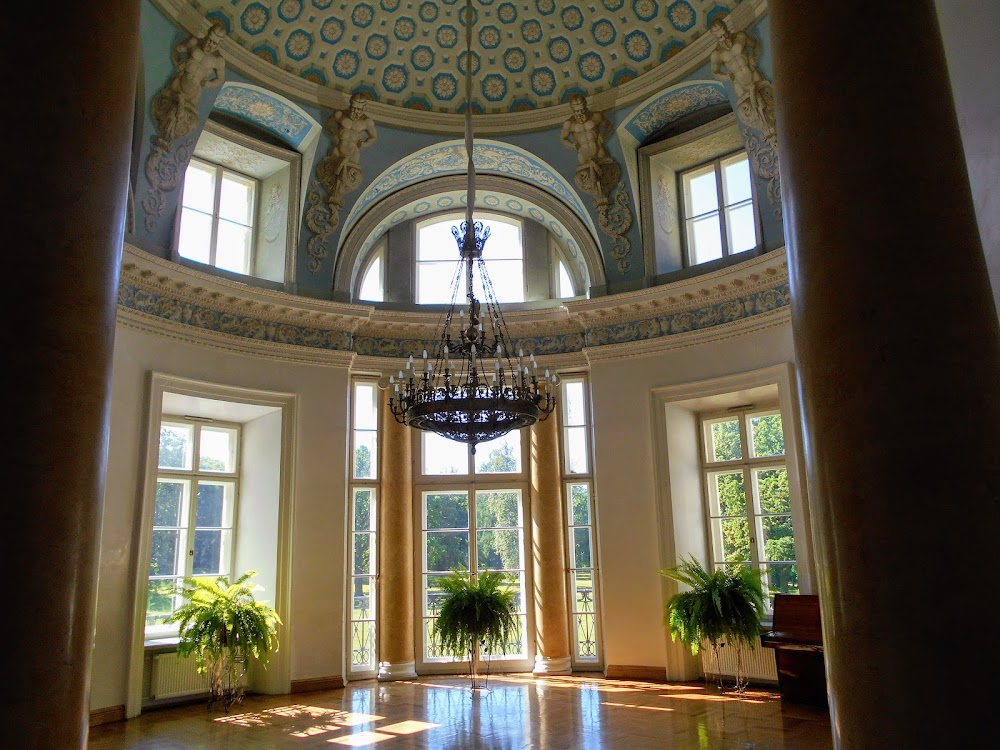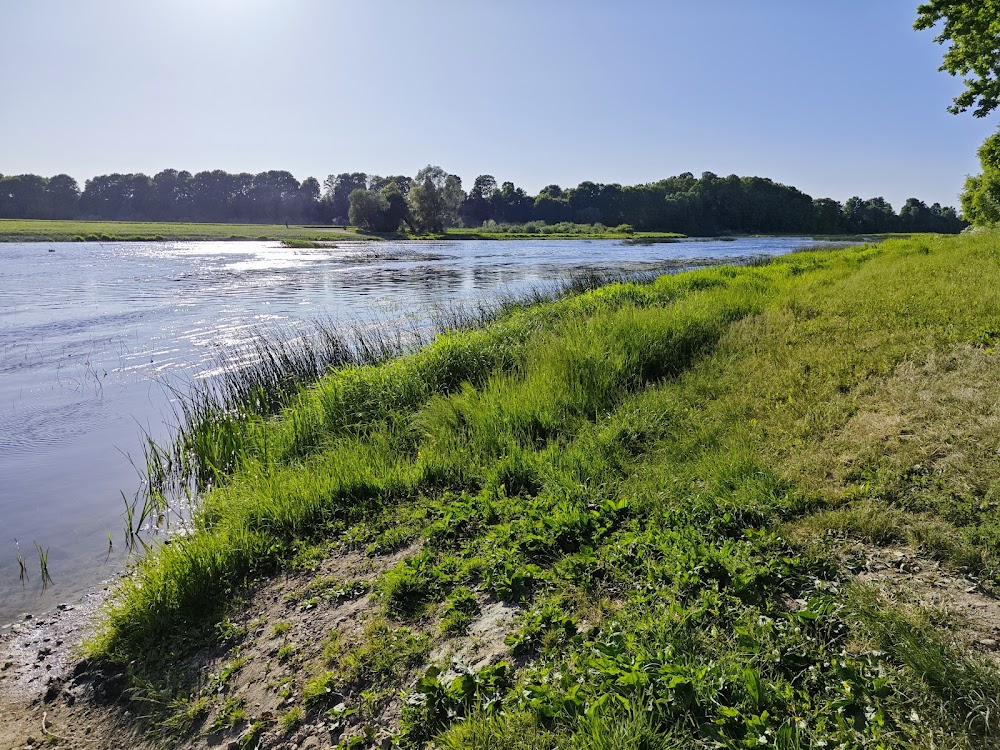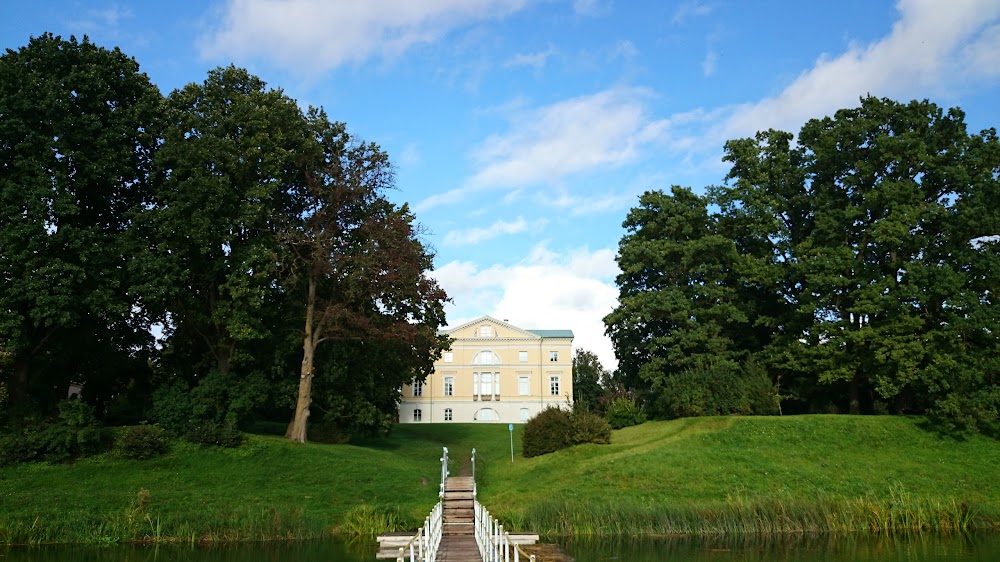Mežotne Palace (Mežotnes pils)
Overview
Mežotne Palace, located in the picturesque Rundāle Municipality of Latvia, is a breathtaking example of neoclassical architecture that is steeped in rich history. Nestled along the tranquil banks of the Lielupe River, this iconic structure embodies aristocratic elegance and showcases the meticulous craftsmanship of its time.
The origins of Mežotne Palace date back to the late 18th century when it was commissioned by Duchess Charlotte von Lieven, a prominent figure who served as a governess for the future Russian Emperor Alexander I. Her close connections to the Russian court enabled her to acquire the necessary funds and resources to bring this grand vision to life.
Designed by the esteemed architect Johann Georg Adam Berlitz, Mežotne Palace began construction in 1797 and took several years to complete. The result is a magnificent building that masterfully combines functionality with aesthetic appeal. Finished around 1802, the palace features a symmetrical façade adorned with elegant ionic columns and intricate decorative elements.
Upon entering the palace, visitors are welcomed by a stunning entrance hall that leads into a series of opulent rooms. The interior design harmoniously blends classical and Empire styles, showcasing ornate stucco ceilings, exquisite wall paintings, and lavish chandeliers. Each room is thoughtfully furnished with period-appropriate pieces, creating an atmosphere of refined luxury that transports guests back in time.
The surrounding landscape further enhances the grandeur of Mežotne Palace. Set within a beautifully landscaped park of approximately five hectares, the grounds are designed in the English garden style, featuring naturalistic layouts, meandering paths, and stunning views. Ancient trees, manicured lawns, and charming ornamental ponds invite visitors to take leisurely strolls and enjoy moments of peaceful reflection.
Throughout its storied history, Mežotne Palace has experienced numerous changes in ownership and purpose. After the passing of Duchess Charlotte von Lieven, the estate remained within the Lieven family for generations. However, the 20th century brought significant upheaval. During the tumultuous years of World War I and II, the palace suffered damage and was eventually nationalized by the Soviet regime.
In the Soviet era, Mežotne Palace was repurposed for various functions, including serving as an agricultural school, which inevitably altered some of its original features. Despite these changes, the palace has retained much of its historic charm and architectural integrity.
The restoration of Mežotne Palace began after the dawn of Latvian independence in 1991, marking a new chapter in its history. Recognizing its cultural and historical significance, dedicated restoration efforts were launched to return the palace to its former glory. Skilled artisans and conservators worked tirelessly to restore its architectural details and interior decorations.
Today, Mežotne Palace stands as a testament to Latvia’s rich cultural heritage. Operating as a hotel, it offers guests a unique opportunity to experience the opulence of bygone aristocratic life. Visitors can explore its beautifully restored rooms, partake in guided tours, and immerse themselves in the serene beauty of its gardens. The palace also serves as a venue for cultural events, exhibitions, and weddings, bridging the connection between the past and the present.
The story of Mežotne Palace is one of resilience and elegance, reflecting the broader historical currents that have shaped Latvia. Its meticulous construction, varied ownership, and ultimate restoration highlight the passion and effort invested in preserving a vital piece of the nation’s architectural and cultural legacy.







